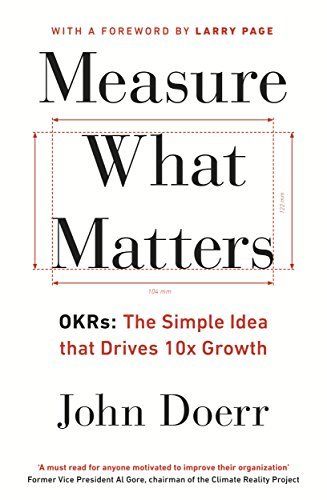Instead of managing time (a Chronos approach), mindful productivity focuses on managing three interrelated resources:
1. Physical Resources: Managing Energy - Honor your chronotype (morning lark, night owl, or "third bird")
- Track energy levels throughout the day to identify your personal peaks and valleys
- Schedule demanding tasks during your natural energy peaks
- Respect biological rhythms including daily cycles, hormonal shifts, and seasonal changes
2. Cognitive Resources: Managing Executive Function - Recognize limits to attention and working memory
- Practice sequential focus (one thing at a time) to work with cognitive bottlenecks
- Consider your environment when choosing tasks
- Close unnecessary apps and eliminate distractions during focused work
3. Emotional Resources: Managing Emotions - Distinguish between eustress (positive stress) and distress (harmful stress)
- Notice when stress accumulates to a critical point
- Use conscious movement to stimulate your parasympathetic nervous system
- Develop emotional agility to navigate your emotional landscape
Section: 2, Chapter: 4
Modern culture's obsession with productivity creates a toxic relationship with time. Le Cunff describes interviewing numerous "recovering productivity junkies" who shared similar stories—engineers, startup founders, educators, nurses, and executives who had pushed themselves to burnout through relentless execution.
This pressure to maximize productivity stems from multiple sources. Culturally, being productive is seen as a moral imperative; as management theorist Peter Drucker noted, "On [productivity] rest all of the economic and social gains of the 20th century." Growing up with role models who highly value productivity—praising grades over effort, obsessing over learning new skills, packing activities into weekends—can cause us to internalize this mindset.
Major life transitions can also trigger productivity mania as we seek control during uncertain times. One community member described meticulously logging even his limited leisure time on spreadsheets after starting a high-stress startup job. For neurodivergent individuals, productivity can become a fixation, leading to endless research of tools and techniques that paradoxically become distractions from actual work.
Section: 2, Chapter: 4
To shift from Chronos (mechanical time) to Kairos (qualitative time) when life demands productivity, develop a personal Kairos ritual—a simple practice that helps you open a magic window for focused work:
1. Choose a simple, repeatable action that can quickly shift your state of being:
- Agathe Cury sits in a corner of the room and does a quick breathing exercise
- François Singer walks slowly in circles or briefly lies down
- Anaïs Ait Ouazzou listens to mood-boosting music
- Manuela Da Cunha goes to another room, closes the door, and takes deep breaths
- Jem Chevillotte makes a cup of tea in a five-minute disconnect
2. Focus on practicality : Choose something you can easily do in your typical work environment
3. Make it personally meaningful : Select something you enjoy and look forward to
These rituals work by physically guiding you to pause and recalibrate energy, cognitively interrupting autopilot mode, and emotionally offering a sanctuary to acknowledge feelings and reconnect with yourself.
Section: 2, Chapter: 4
The book offers a four-part framework for replacing linear models of success with an experimental model of growth:
1. Pact: Commit to curiosity - Get started by creating small experiments rather than setting rigid goals
2. Act: Practice mindful productivity - Keep going through sustainable approaches to work and rest
3. React: Collaborate with uncertainty - Stay flexible by viewing disruption as data rather than disaster
4. Impact: Grow with the world - Dream bigger by connecting with others and building in public
These tools collectively foster what Le Cunff calls "systematic curiosity"—a conscious commitment to inhabit the space between what you know and what you don't with interest and openness rather than fear and anxiety.
Section: 1, Chapter: 0
Traditional goal-setting approaches based on linear progression suffer from three major flaws:
1. Linear goals stimulate fear : Starting something new outside our comfort zone is daunting. Without expertise from experience, we're uncertain where to begin. The sheer number of options can lead to analysis paralysis, while concerns about qualifications, resources, or potential failure can trigger debilitating anxiety.
2. Linear goals encourage toxic productivity : Research shows many goals people pursue "may be merely justifications to keep themselves busy." This mindset creates an overly strict relationship with work where we believe missing any task will cause everything to collapse. We work while sick, cancel social plans, and feel guilty about breaks—creating a treadmill that leaves us mentally drained and paradoxically less productive.
3. Linear goals breed competition and isolation : When everyone climbs the same ladder, we become competitive for the wrong reasons, viewing potential collaborators as rivals. This isolating mentality prevents the pooling of resources and collaborative learning that could benefit our careers and communities.
Section: 1, Chapter: 1
A pact is a pledge to engage in a particular activity for a predetermined period of time. It follows a simple format: "I will [action] for [duration]."
What makes a pact effective is that it focuses on outputs (e.g., "publish 25 newsletters over 25 weeks") rather than outcomes (e.g., "get 5,000 newsletter subscribers in 25 weeks"). It gives you confidence to start because there's no wrong choice—you simply need to show up.
An effective pact has four key characteristics:
1. Purposeful : Though freed from fixating on outcomes, a pact should feel exciting and provide meaning through the learning journey itself.
2. Actionable : Based on actions you can reliably perform with current resources, enabling immediate action rather than endless planning.
3. Continuous : Built around simple, repeatable actions to collect consistent data (e.g., something you do daily, weekly, or on weekends).
4. Trackable : Measured with a binary question—Have you done it or not?—making progress monitoring straightforward.
Section: 1, Chapter: 3
Procrastination involves two sources of suffering, similar to the Buddhist concept of the two arrows:
1. The First Arrow : The procrastination itself—scrolling instead of studying, watching TV instead of working, browsing shopping sites instead of writing.
2. The Second Arrow : Your emotional reaction to procrastinating—the anxiety, shame, and guilt that accompany the behavior. This second arrow is often more painful than the first.
Studies confirm that adverse psychological reactions like anxiety and shame typically accompany procrastination. As Dr. Tim Pychyl, a leading expert on procrastination, explains: "There is nothing like the downward spiral of procrastination to make you feel like an abject failure. That's why the strongest emotion associated with procrastination is guilt."
This emotional burden actually makes it harder to overcome procrastination. Instead of calm and confident, we feel deeply frustrated and at war with our sense of self. Changing this relationship starts with understanding that procrastination isn't a moral failure but a listening failure—a missed opportunity to receive important information.
Section: 2, Chapter: 5
When you find yourself procrastinating, perform a "Triple Check" by asking whether the issue is coming from your head, heart, or hand:
1. Head: "Is the task appropriate?" - Are you skeptical about the benefits of this task?
- For smaller tasks with no dependencies, simply remove them from your list
- For substantial tasks, write down why you think this approach isn't right
- Consider redefining your strategy based on these insights
2. Heart: "Is the task exciting?" - What feelings arise when you think about this task?
- Is there fear, boredom, irritation, or simply a lack of enjoyment?
- Free-write for ten minutes to explore your emotional response
- For strong negative feelings, consider pairing the task with something enjoyable
3. Hand: "Is the task doable?" - Do you have the skills, knowledge, and tools needed?
- Could you ask for help from a friend, colleague, or mentor?
- Consider taking a course or finding a coach for needed skills
- Beware of using "learning" as procrastination in disguise
When your head, heart, and hand are all in harmony—when a task feels appropriate, exciting, and doable—Le Cunff calls this "aligned aliveness." In this state, starting and continuing work becomes much easier.
Section: 2, Chapter: 5
The Plus Minus Next tool transforms metacognition from abstract concept to practical weekly habit using three simple columns:
1. Plus : Record what went well—accomplishments, moments of joy, positive feedback, or things you're grateful for. Include both professional successes and personal victories.
2. Minus : Note challenges, obstacles, setbacks, misunderstandings, or neglected areas. Track when you strayed from healthy habits or experienced persistent negative emotions.
3. Next : Use insights from both previous columns to shape your upcoming actions. Consider how to foster more positive experiences while constructively addressing negative ones.
Nothing more is needed—no perfect format, no complex prioritization. Just spend five minutes weekly recording a few bullet points in each column. The technique works because it's:
• Fast: Should take no more than five minutes
• Flexible: No rigid categorization between personal and professional life
• Future-focused: Emphasizes forward movement rather than dwelling on failures
This simple practice helps you celebrate accomplishments, learn from challenges, and adapt your approach—all crucial components for building growth loops rather than endlessly climbing ladders.
Section: 3, Chapter: 7
"Essentialists see trade-offs as an inherent part of life, not as an inherently negative part of life. Instead of asking, 'What do I have to give up?' they ask, 'What do I want to go big on?' The cumulative impact of this small change in thinking can be profound."
Section: 1, Chapter: 3
In the business parable The Goal, the protagonist Alex faces the challenge of improving his factory's output. His mentor teaches him to find the bottleneck or constraint in the system - the "slowest hiker." This one bottleneck is holding up the entire production line. Alex learns that instead of trying to maximize the efficiency of every single element in the system, he should focus on alleviating the chief constraint, which then has a domino effect on overall throughput. We can apply this to our own work and life:
- Clarify your essential intent - what's your goal?
- Identify the obstacle - the "slowest hiker" - that is holding you back the most
- Remove that obstacle before worrying about optimizing anything else
Sometimes what is standing between us and our goal is just one key constraint. Remove it and execution becomes far easier.
Section: 4, Chapter: 16
Essentialists apply a selective criteria when deciding what activities and commitments to take on. They evaluate opportunities carefully, saying no to the vast majority of options and only saying yes when something is truly essential and high impact. They are willing to turn down very good opportunities to wait for truly great ones. They ask "Will this activity or effort make the highest possible contribution toward my goal?" If they can't give a definitive yes, then they gracefully decline.
This selectivity allows them to channel their efforts into excelling in the vital few areas that matter most, making execution almost effortless. Nonessentialists, by contrast, take on too many things and spread themselves too thin, making execution a constant struggle.
Section: 2, Chapter: 9
"The way of the Essentialist is the path of the disciplined pursuit of less. It is not a path for people who aspire to the middle. It is a path for those who put their best effort toward fewer but better things. When faced with a decision between two opportunities, the Essentialist asks, "Which one of these is essential to me?" If one is a 9/10 and the other is a 10/10, the Essentialist knows to go for the 10. The logic is simple: if you rated an option anything less than a 9 out of 10, then it is a no. It is not something you are going to pour your energy into."
Section: 2, Chapter: 9
Identify a few key habits that align with your essential intent
- Block regular time for these in your schedule until they become automatic
- Tie a new habit to an existing one - pair your new journaling habit with your morning coffee ritual
- Start small - 5-10 minutes per day - then build on your consistency
- Make the essential the default so you don't have to think about it
Routines allow us to achieve more by not relying solely on motivation or willpower in the moment. Investing in creating the right routines pays massive dividends.
Section: 4, Chapter: 19
- Explore and evaluate a broad set of options before committing.
- Eliminate the nonessentials to make execution of the vital things almost effortless.
- It's not about just getting things done, but getting the right things done.
- Always ask "Is this the very most important thing I should be doing with my time and resources right now?"
Section: 1, Chapter: 2
Break big goals down into small wins that you can achieve each day or each week
- Do the minimal viable preparation - focus on the 10% that will get you 90% of the way there
- Don't aim for radical change, aim for small improvements in the right direction
- Track and celebrate small wins to maintain motivation over the long run\
- Remember that slow and steady wins the race.
Intensity is not a substitute for consistency. Essentialists understand the power of compounding incremental progress over time. They aim for small wins in essential areas rather than big sprawling projects that never get done.
Section: 4, Chapter: 18
Numerous studies show the massive costs of sleep deprivation:
- Emotional: Irritability, mood swings, stress
- Physical: Impaired cognition, weight gain, weakened immunity, risk of serious health problems
- Professional: Inability to focus, poor judgment, lower creativity, reduced productivity Essentialists view sleep as a priority for both their personal well-being and professional effectiveness. They:
- Add sleep to their schedules, regarding it as important as any other appointment
- Create a relaxing pre-sleep routine to wind down
- Sleep in a cool, dark room without digital distractions
- Aim for a consistent 7-8 hours per night
Section: 2, Chapter: 8
Routines help automate the essential. When we build habits and routines around our most essential activities, we free up mental energy from deciding what to do and can instead channel that energy into doing it well. Routines combat decision fatigue and create mental space for being fully present and at our best.
Olympic swimmer Michael Phelps had a specific routine he followed religiously on race days - from what time he woke up to what he ate to his warm up laps in the pool. This allowed him to not overthink the race but simply execute. His coach noted that Phelps was often halfway done with his winning routine before his competitors even arrived at the pool. Routine enabled peak performance.
Section: 4, Chapter: 18
Jeff Weiner, CEO of LinkedIn, schedules up to two hours of blank space on his calendar every day. He divides these buffers into thirty minute increments. He uses this space to think big and strategically about the company - product strategy, key priorities, culture and team dynamics, etc.
At first it felt like an indulgence, but he soon found it was his single most valuable productivity tool. It allowed him to better focus on the essential strategic questions rather than just reacting to the tactical needs of the day. He credits this practice for the company's success.
Section: 2, Chapter: 5
Covey offers an example of how to apply Quadrant II thinking to a common situation - handling an overflowing inbox.
A Quadrant I reactive approach would be diving in and starting to answer emails as quickly as possible, putting out fires as they arise. You might stay afloat, but you'd likely spend all your time reacting to urgent demands without making progress on key priorities.
In contrast, a Quadrant II proactive approach might look like:
- Stepping back to define what outcomes you need from your email management system
- Setting aside time to organize emails based on importance/urgency and your mission
- Establishing a cadence for responding to different types of emails so progress doesn't depend on constant monitoring
- Identifying emails/tasks that could be delegated or eliminated to free up time
- Communicating proactively to senders about your email practices to manage expectations
This type of Quadrant II, principle-centered approach trades off reacting quickly in the moment for a sustainable system that consistently produces better results.
Section: 2, Chapter: 5
In the introduction, the authors explain that Rework is based on their experience building a successful company, 37signals. The book aims to show an easier, faster, more direct way to succeed in business. It rejects many "rules" of business and advocates for a simpler, no-nonsense approach focused on getting things done. The authors emphasize this isn't based on academic theories, but real-world experience in building a profitable business.
Section: 1, Chapter: 1
"Pare down to the essence, but don't remove the poetry. Keep things clean and unencumbered but don't sterilize."
Simplicity is essential, but it requires careful judgment. The goal is to pare down to the essence, but not overshoot into sterility. Too much removal makes a product lifeless. So as you simplify, don't just cut - refine. Keep the essential core but also retain the poetic touches that make your product engaging, memorable, and human. The right details make simplicity sing.
Section: 1, Chapter: 7
People often shoot down new ideas, saying "that won't work in the real world." But the authors argue the real world isn't a valid excuse. It's a self-imposed limitation. Just because something seems unrealistic doesn't mean it's impossible. Most things labeled impossible are really just things no one has bothered to try yet in that particular way. Don't constrain your ambitions based on what others claim is the "real world." Create your own reality instead.
Section: 1, Chapter: 2
"Plans let the past drive the future. They put blinders on you. 'This is where we're going because, well, that's where we said we were going.' And that's the problem: Plans are inconsistent with improvisation."
Section: 1, Chapter: 3
The best way to create something great is to make something you want to use yourself. Then you can:
- Design based on firsthand knowledge, not assumptions
- Directly assess the quality and usefulness of what you make
- Rely on your own enthusiasm for the product to drive you forward
When you solve your own problem, you achieve a level of understanding and passion that's difficult to replicate when making things for others. So start by addressing your own needs and desires. Odds are others will share them too.
Section: 1, Chapter: 2
"If you want to do something, you've got to do it now. You can't put it on a shelf and wait two months to get around to it. You can't just say you'll do it later. Later, you won't be pumped up about it anymore."
Section: 1, Chapter: 1
When you're inspired, seize the moment. Inspiration is a renewable but fleeting resource. It comes often but evaporates quickly. When a great idea strikes, act on it while your enthusiasm is hot. If you wait, your motivation will fade and the work will become a chore.
Pounce on inspiration and ride it to completion. You can analyze, refine and edit later. But nothing will happen without an initial burst of inspired energy. So when inspired, clear your plate, lock yourself away, and get as much done as you can while the spirit is with you.
Section: 1, Chapter: 12
Estimates, especially long-term ones, are always wrong. The solution is to break big tasks and time frames into the smallest possible units. Instead of one 12-week project, frame it as 12 one-week projects.
By planning one week at a time, your estimates get more realistic. Your assumptions are regularly tested. You avoid investing heavily into plans that prove misguided later. When timeframes or tasks prove bigger than expected, you can adjust tactically without derailing the whole project.
Section: 1, Chapter: 5
A core tenet of slow productivity is rejecting the need to maintain a constantly high level of intensity. Instead, embrace a working rhythm that allows for natural ebbs and flows:
- Schedule "slow seasons" where you intentionally reduce your workload and external obligations in order to recharge
- Build reflective downtime into your days and weeks
- Protect time for deep focus on your most important projects
- Allow bursts of intensity when needed, but avoid making them your default
Section: 2, Chapter: 4
The book opens with the story of writer John McPhee, who in 1966 spent two weeks lying on a picnic table in his backyard, staring up at an ash tree, trying to figure out how to structure a complicated article he was struggling to write. This languid, unhurried approach to his creative process exemplifies the core principles of slow productivity that the book will explore. McPhee's career demonstrates that meaningful accomplishment does not require constant busyness and frantic intensity.
Section: 1, Chapter: 1
For knowledge workers who have some autonomy over their workload, overcommitment often stems from a flawed strategy of self-regulation. We say yes to new requests until we feel so stressed and overwhelmed that we believe we have an unimpeachable excuse for saying no. This guarantees we'll be permanently teetering on the edge of being overscheduled.
A more sustainable approach is to proactively contain your commitments well before you hit a breaking point. Establish clear policies for what you will and won't take on, communicate these boundaries and defend your limited capacity so that you never end up with more on your plate than you can handle.
Section: 2, Chapter: 3
Here's a key tenet of slow productivity - what matters is the ultimate result, not the appearance of staying busy. As you evaluate your own work habits, consider where you may be conflating the two. Are you spending time on things that look or feel productive but don't meaningfully advance your most important projects? See if you can shift more of your time and attention to the efforts that make the biggest difference, even if they unfold at a slower pace. Don't use busyness as a proxy for effectiveness.
Section: 1, Chapter: 1
Jewel's decision reflects a core principle of slow productivity - that to do your best work, you have to be willing to prioritize process over immediate payoffs. It's tempting to take the short-term money or recognition, but these incentives often come with strings attached that impede true quality.
By taking a longer view and having the discipline to invest in your craft without expectation of immediate rewards, you give yourself the space needed to reach your full potential. You can work more methodically and thoughtfully, taking however much time is needed to get the details right.
Section: 2, Chapter: 5
In addition to increasing the time available for real work, taking on fewer obligations at once also improves the quality of the work you do. With your attention less fractured, you're able to approach each task with greater focus, creativity and care.
You can dig deeper on hard problems and come up with more innovative solutions instead of just trying to hastily check things off a too-long to-do list. The resulting work is more thoughtful and impactful. Doing less allows you to do better.
Section: 2, Chapter: 3
One way to work at a more natural pace is to take more time shepherding your most important projects from conception to completion. Newport suggests several strategies for embracing this "slow hunch" approach:
- Maintain a 5-year vision for the big things you want to accomplish
- Double your estimated project timelines to give yourself adequate breathing room
- Simplify your daily schedule so you have time to make steady, incremental progress
- Return to projects repeatedly over time as you develop new ideas and insights
Section: 2, Chapter: 4
When singer-songwriter Jewel got a major label record deal, she made the unorthodox choice to turn down a million-dollar signing bonus. Her concern was that taking such a big advance would put pressure on her to rush out music that was more commercially-oriented rather than true to her artistic vision.
By minimizing her upfront payouts, Jewel freed herself to take a slower, more craftsman-like approach to developing her debut album. She focused on honing her live show and building a grassroots following rather than scoring a quick radio hit. This patience paid off when her music eventually found a wide audience on its own terms.
Section: 2, Chapter: 5
Newport provides two key strategies for reducing your obligations in a professional context:
- Limit the big things. Be intentional about taking on fewer major projects and responsibilities. Set policies for how many you'll allow at once.
- Contain the small things. Use tactics like office hours, templates, and process checklists to streamline, delegate or defer the administrative minutiae that can overwhelm your schedule if left unchecked.
Section: 2, Chapter: 3
Another component of working at a natural pace is selecting physical environments and rituals that produce a state of mind conducive to the work you're trying to do. For intellectually demanding tasks, Newport suggests:
- Choosing spaces that minimize distractions and promote focus, like private offices or libraries
- Using high-quality tools, whether notebooks or software programs, that you enjoy interfacing with
- Developing rituals, like a pre-writing walk or an afternoon tea, that act as a mental on-ramp for challenging work
Section: 2, Chapter: 4
"Humans Aren't Wired For Constant, Unvarying Effort"
The natural work style of great scientists mirrors anthropological findings about the "original" productivity of hunter-gatherers. Unencumbered by the artificial discipline of industrial capitalism, hunter-gatherers work in an oscillating rhythm of intense effort offset by extensive rest and socializing. This is likely the pattern of exertion that human beings evolved to sustain. In contrast, the relentless, unvarying intensity demanded by industrial and knowledge work schedules is deeply unnatural. It requires fighting against our innate need for fluctuating energy expenditure.
Section: 2, Chapter: 4
An obsession with quality isn't just about the nobility of doing good work. It's also a savvy business strategy. When your output is in high demand because of its excellence, you gain leverage to dictate the terms of your working life. Clients seek you out and are willing to pay a premium. Collaborators value your contributions and defer to your judgment.
With an exceptional track record, you can be more selective about what you take on and design a schedule that suits you. In this way, quality and autonomy become mutually reinforcing - doing excellent work earns you the freedom to keep doing excellent work on your own terms.
Section: 2, Chapter: 5
Popular lore holds that Jane Austen wrote her novels in the snatches of time between endless social engagements. But a closer look at her life reveals a different story.
Austen was most productive as a writer during an extended period when she was largely freed from both domestic chores and social commitments. Living at Chawton Cottage with her sister, mother and a friend, she was able to spend her days focused primarily on writing, without many external obligations to sap her time and attention. This unencumbered lifestyle enabled her to write her most celebrated works.
Section: 2, Chapter: 3
Every project you take on incurs an "overhead tax" - the time required for logistical tasks like meetings, email, and context switching that don't directly advance the project itself.
As you take on more simultaneous projects, this overhead balloons and eventually hits a tipping point where you spend the majority of your time just managing the administrative detritus generated by your overflowing slate of responsibilities.
This leaves little time for real productive work and induces an overwhelming sense of busyness. Cutting back on the number of projects you take on at once contains this overhead tax and frees up time for more substantive progress.
Section: 2, Chapter: 3
Following the success of Slow Food, a variety of other slow movements emerged to advocate for more intentional, human-friendly approaches to travel, parenting, education, reading and more.
While the specific practices differ, they share a common sensibility - that doing things at a more natural pace, often informed by cultural tradition, yields a richer experience than defaulting to the hectic norms of modernity. These movements demonstrate that the core ideas behind Slow Food can be translated to many different domains.
Section: 1, Chapter: 2
The book presents slow productivity as an alternative philosophy for organizing knowledge work in a more sustainable and meaningful way. Its three core principles are:
- Do fewer things
- Work at a natural pace
- Obsess over quality
By following these principles, the book argues, knowledge workers can escape the epidemic of overload and produce work they're proud of without grinding themselves down in the process.
Section: 1, Chapter: 1
Slow productivity rejects busyness, seeing overload as an obstacle to producing results that matter, not a badge of pride.
Section: 1, Chapter: 1
A common misconception is that working slower means getting less done. But as the hunter-gatherer example shows, a fluctuating pace doesn't necessarily lower overall output. In fact, the intense bursts enable higher quality efforts that can produce outsized results, making up for any "lost" time spent resting or recharging.
As you experiment with slow productivity, embrace this underlying truth. Judge your success not by how constantly busy you are, but by the ultimate results you're able to generate by working at a more natural rhythm. You may be surprised by how much you're still able to achieve.
Section: 1, Chapter: 2
Obsessing over quality doesn't mean demanding perfection on your first attempt. In fact, producing great work often requires iterating repeatedly and being willing to put in the reps to master your craft. Some strategies for embracing this apprenticeship mindset:
- Study the work of experts in your field to absorb best practices and expand your sense of what's possible
- Put in the hours of deliberate practice required to hone your skills, even if progress feels slow
- Actively seek out feedback from trusted peers and mentors and use it to guide your efforts
- Judge your work by how much you're learning and improving, not just the current quality of your output
Section: 2, Chapter: 5
Productivity is a well-defined concept in sectors like agriculture and manufacturing, where outputs and processes are concrete. But in knowledge work, which emerged as a major economic force in the mid-20th century, the nature of productivity is much more ambiguous.
Managers didn't know how to measure or improve productivity for these more cognitively-complex jobs. In response, they defaulted to using visible activity, like hours spent in the office or messages sent, as a proxy for productivity. The more activity you see, the more you assume an employee is contributing.
Section: 1, Chapter: 1
When faced with a frustrating situation outside your control, channel your irritation into motivation. Don't waste energy complaining or wishing things were different. Instead, funnel your emotions into action - let your frustration drive you to find a solution. Stay loose and flexible so you can adapt to changing circumstances. Focus on maintaining forward momentum, even if you have to change course to get there.
Look for opportunities to take proactive steps that put you in control. This could mean:
- Proposing solutions instead of just pointing out problems
- Reframing a weakness as a strength
- Forcing others to respond to you rather than the other way around
- Creating a plan while others are still processing what happened
By seizing the initiative and taking bold action, you can turn an obstacle to your advantage and direct events on your terms. An offensive posture beats a defensive one.
Section: 2, Chapter: 15
A "flanking maneuver" is a technique of attacking a problem from an unexpected direction rather than head-on. It requires strategic creativity and a willingness to try unorthodox approaches. To execute a successful flank attack:
- Identify the obstacle's weaknesses and vulnerabilities
- Look for a path of "least resistance" where you can make progress
- Appear to be moving in one direction while advancing in another
- Strike decisively where the obstacle is unprepared
Flanking maneuvers allow you to advance indirectly when direct attacks are ineffective.
Section: 2, Chapter: 14
Perception alone is not enough - it must be coupled with Action to have an impact. While it's critical to see things clearly and find the right perspective, that means nothing if not acted upon. You must prepare yourself to put your perceptions and insights to work through disciplined, persistent effort. Knowledge and vision can only take you so far. Directed action is what turns them into results.
Section: 1, Chapter: 9
"As the Haitian proverb puts it: Behind mountains are more mountains. Elysium is a myth. One does not overcome an obstacle to enter the land of no obstacles. On the contrary, the more you accomplish, the more things will stand in your way. There are always more obstacles, bigger challenges. You're always fighting uphill. Get used to it and train accordingly."
Section: 3, Chapter: 20
While humans are fundamentally social creatures, time alone is crucial for flow and self-development. But many people dread solitude, feeling bored or anxious unless occupied with external stimuli.
- Establish routines and rituals that give order to consciousness. Set intentions for alone time and break it into structured chunks.
- Use alone time for skill-building pursuits like meditation, exercise, artistic expression or learning.
- Treat inner experience as a landscape ripe for exploration. Observe thoughts and feelings with interest and curiosity.
- Reframe solitary chores and activities as chances for reflection and creativity. Make them into mindful rituals.
Through practice, solitude can become a reliable source of meaning and enjoyment.
Section: 1, Chapter: 8
Some key principles to transform even routine jobs into flow-producing activities:
- Identify long-term goals that lend meaning to the work. See how your efforts contribute to something greater.
- Find ways to get immediate feedback on your performance to track progress and adjust.
- Continually refine your skills and take on new challenges to avoid stagnation.
- Develop good relationships with coworkers and customers. Interacting with others boosts motivation.
- Reframe obstacles as opportunities to learn and grow. Don't be derailed by setbacks.
With the right approach, even mundane tasks can become vehicles for flow. It's about having clear goals, building skills, and focusing your mind.
Section: 1, Chapter: 4
Psychic entropy is the disorder we experience when information conflicts with existing intentions or when we don't know what to do with our attention. This causes a lack of focus, procrastination, confusion, and stress.
To overcome psychic entropy and achieve flow:
- Set clear intentions and stick to them. Be very selective with what you pay attention to.
- Develop the ability to concentrate deeply on the task at hand. Limit distractions and interruptions.
- Invest your attention fully in the present moment and current activity. Let go of worries, regrets and rumination.
- Choose activities that have clear goals and provide immediate feedback. Adjust the level of challenge to match your skills.
Section: 1, Chapter: 2
To achieve mastery over consciousness and enable flow experiences:
- Set clear goals
- Find ways to measure progress
- Keep concentrating on the task at hand
- Develop the skills to interact with available opportunities
- Keep raising the stakes if the activity becomes boring
Following this process turns even mundane tasks and routines into enjoyable flow activities. The key is learning to restructure what happens in consciousness moment by moment.
Section: 1, Chapter: 2
Optimal experiences have several common characteristics:
- They occur when we confront tasks we have a chance of completing
- We must be able to concentrate on what we are doing
- The activity has clear goals
- The activity provides immediate feedback
- One acts with deep, effortless involvement, without worries or frustrations
- There is a sense of control over one's actions
- Concern for the self disappears, yet the sense of self emerges stronger afterwards
- The sense of time is altered; hours pass by in minutes
This describes the phenomenology of enjoyment, the psychological conditions that make leisure and work activities conducive to flow.
Section: 1, Chapter: 3
Even mundane activities can be transformed into something enjoyable by following these steps:
- Set an overall goal, and as many subgoals as realistically feasible. Know what you want to accomplish.
- Find ways to measure your progress and get feedback. Track your achievements in a concrete way.
- Keep concentrating on the activity and make finer and finer distinctions in the challenges involved. Push yourself to higher levels of performance.
- Develop the skills necessary to interact with the available opportunities. Keep learning and growing to meet bigger challenges.
- Keep raising the stakes if the activity becomes boring. Up the difficulty when it gets too easy.
Finding flow in everyday life requires restructuring routines into meaningful, goal-directed, skill-building activities. It's all about your approach.
Section: 1, Chapter: 3
To experience flow, there must be a good fit between the challenges perceived and the skills possessed. If the challenges are too high relative to one's skills, anxiety results. If one's skills are higher than the available opportunities for using them, boredom sets in. The ideal is a "golden ratio" where challenges and skills are perfectly balanced, stretching a person without overwhelming them. This optimal zone tends to emerge when a person is wholeheartedly performing a task or activity for intrinsic reasons.
Section: 1, Chapter: 4
"What makes an activity conducive to flow is that it is an end in itself. Even if initially undertaken for other reasons, the activity that consumes us becomes intrinsically rewarding. Surgeons speak of their work: "It is so enjoyable that I would do it even if I didn't have to." Sailors say: "I am spending a lot of money and time on this boat, but it is worth it—nothing quite compares with the feeling I get when I am out sailing.""
Section: 1, Chapter: 3
Many people describe their jobs as more engaging and enjoyable than their free time. Yet when asked, they also say they wish they didn't have to work and could do more leisure activities. This presents a paradox.
- Focus on the intrinsic aspects of your work. Identify projects and responsibilities you find genuinely engaging, rather than just means to an end.
- Reframe sources of dissatisfaction as challenges to overcome. Dealing with a difficult coworker or boring task can be an opportunity to practice people skills or innovate.
- Make sure you have clear goals, immediate feedback and a good match between skills and challenges in your work activities. These are key conditions for flow.
- Set boundaries between work and leisure. Mentally disengage from job worries during time off so you can be fully present.
- Choose leisure activities that offer opportunities for flow and growth, not just passive entertainment. Invest energy in skill-building hobbies.
Section: 1, Chapter: 7
Adopt the "4 Disciplines of Execution" methodology from the business world to keep your deep work habit on track:
- Focus on the Wildly Important: Narrow your focus to a small number of ambitious outcomes.
- Act on the Lead Measures: Track the behaviors that will drive success on these goals.
- Keep a Compelling Scoreboard: Make your tracking visible for added motivation.
- Create a Cadence of Accountability: Review your progress regularly and commit to specific actions.
Section: 2, Chapter: 1
To succeed with deep work you must wean your mind from a dependence on distraction. Much like athletes must take care outside their training sessions, you'll struggle to achieve the deepest levels of concentration if you spend the rest of your time fleeing the slightest hint of boredom. Strategies to combat distraction include scheduling breaks from focus instead of breaks from distraction, working with intensity like Roosevelt, meditating productively, and memorizing a deck of cards.
Section: 2, Chapter: 2
Develop the habit of letting small bad things happen. If you don't, you'll never find time for the more important things. Three tips that help:
- Make people who send you e-mail do more work. Don't respond to open-ended emails. Have senders filter themselves by making them fill out a form or answer specific questions before you'll engage.
- Do more work when you send or reply to emails. Break down tasks into processes in your messages. Don't just send one-line responses that require many more rounds of back-and-forth to resolve. Minimize friction by clearly describing the process (next steps, deadlines, etc.).
- Don't respond. Use a sender filter with an auto-response indicating you are busy and may not respond. Don't respond if the email is ambiguous, not truly important or interesting to you, or if nothing really good would happen if you did respond and nothing really bad would happen if you didn't.
Section: 2, Chapter: 4
The Craftsman Approach to tool selection is summed up as: Identify the core factors that determine success and happiness in your professional and personal life. Adopt a tool only if its positive impacts on these factors substantially outweigh its negative impacts. This approach is inspired by the way craftsmen traditionally viewed their tools, carefully weighing the positives and negatives of each.
- Identify the main high-level goals in both your professional and personal life.
- List the 2-3 most important activities that help you satisfy each goal.
- Consider the network tools you currently use and ask whether they have a substantially positive, negative, or little impact on your regular and successful participation in these activities.
- Keep using the tool only if the benefits substantially outweigh the negatives. Stick to the core activities that connect most with your key goals when evaluating.
Section: 2, Chapter: 3
Shallow work is inevitable, but you must keep it in check and limit its consumption of time and attention. If you don't quantify and control shallow efforts, they can easily overwhelm your schedule and destroy your ability to do deep work. The strategies that follow help contain the shallow to leave more room and energy for the deep. This includes scheduling every minute, quantifying depth of every activity, setting a shallow work budget, finishing your work by 5:30pm, and becoming hard to reach.
Section: 2, Chapter: 4
Take a period where you're physically occupied but not mentally, like walking or driving, and focus your attention on a professional problem. Keep bringing your attention back to the problem when your mind wanders or stalls. Be wary of looping on what you already know - push yourself to generate new ideas. When stuck, define the specific next-step question you need to answer. Two key benefits of productive meditation: (1) Strengthen your distraction-resisting muscles, (2) Leverage your mind's disdain for boredom to naturally generate new insights.
Section: 2, Chapter: 2
The author argues that the use of social media tools should be avoided for most knowledge workers. While these tools fragment attention and reduce the ability to concentrate, their perceived benefits are typically not much more than minor distractions. The any-benefit approach to network tool selection, where any potential positive is used to justify its use, is flawed. Instead, the craftsman approach should be used, which asks to adopt a tool only if its positive impacts substantially outweigh its negative impacts.
Section: 2, Chapter: 3
Instead of scheduling occasional Internet sabbaticals, schedule Internet use in advance with time blocks for deep work in between. Concentrate offline for blocks of time, then take an Internet break, then return to blocks of offline work. If you're in a deep work block and feel the urge to go online, resist. If necessary, set a timer for your Internet blocks so you know you have a hard limit. The more you avoid switching to distractions, the easier concentration will become.
Section: 2, Chapter: 2
Psychologist Mihaly Csikszentmihalyi found using the experience sampling method that people are happiest when they are in a state of flow - a state of deep concentration on a single task. This finding pushed back against the popular notion that relaxation makes people happy. Csikszentmihalyi argues jobs should be restructured to facilitate more flow. Deep work is well suited to generate a flow state:
- Stretching your mind to its limits
- Concentrating
- Losing yourself in the task
Decades of research show that the act of going deep orders the consciousness in a way that makes life worthwhile. To build your working life around the experience of flow generated by deep work is a proven path to deep satisfaction.
Section: 1, Chapter: 3
A grand gesture is a radical change to your normal environment, coupled with a significant investment of effort or money, all dedicated to supporting a deep work task. The novelty of the gesture combats the difficulty of the task, reduces the accessibility of distractions, and provides psychological motivation. Examples include J.K. Rowling checking into a luxurious hotel suite to complete a book, Bill Gates taking "Think Weeks" to work in isolation, and Shockley locking himself in a hotel room to iron out a key design problem.
Section: 2, Chapter: 1
To make the most of deep work, build rituals and routines that make it a regular and significant part of your schedule. These habits help overcome challenges like willpower depletion and distraction. Strategies include deciding on your depth philosophy, ritualizing deep work, leveraging radical changes to your environment, working with others who share your ethic, and executing your deep work habit like a business.
Section: 1, Chapter: 1
There are several different approaches to integrating deep work into your schedule:
- The Monastic Philosophy: Eliminate or drastically minimize shallow obligations.
- The Bimodal Philosophy: Divide your time into stretches of deep work and leaving the rest open for everything else.
- The Rhythmic Philosophy: Transform deep work into a regular habit.
- The Journalistic Philosophy: Fit deep work wherever you can into your schedule.
Choose an approach that fits your circumstances and constraints.
Section: 2, Chapter: 1
In the book "All Things Shining", philosophers Hubert Dreyfus and Sean Dorrance Kelly argue that craftsmen provide a key to cultivating meaning and sacredness in today's secular age. A craftsman's task is to cultivate skill and discern the inherent meaning of the materials he works with rather than forcing his arbitrary will.
There is meaning inherent in material things. A wheelwright doesn't arbitrarily decide which properties of wood are valuable - its value is inherent to it and the task it is meant to perform. Craftsmanship provides an ordering of the world and source of meaning outside the individual. The same applies to knowledge work - your work is your craft. If you hone your skill and apply it with respect and care, you can generate meaning.
Section: 1, Chapter: 3
For some types of problems, working with someone else at a shared whiteboard (or something similar) can push you deeper than if you were working alone. The presence of the other party waiting for your next insight can short-circuit the natural instinct to avoid depth. This is a collaborative form of deep work called the "whiteboard effect". A key caveat is that the collaboration must be on a discrete, complicated problem. Shallow discussions do not generate this effect. Separation from serendipitous collaboration that might bring inspiration is also important to allow uninterrupted concentration.
Section: 2, Chapter: 1
To help wean yourself off addictive but low value social media tools, try a 30-day detox:
- Identify the social media tools you most often use.
- Stop using them completely for 30 days, but don't formally quit (you can still use them for key professional purposes if unavoidable). Don't announce that you're quitting.
- After 30 days, ask: Would the last 30 days have been notably better if I had been able to use this service? Did people care that I wasn't using this service? If your answer is "no" to both, quit the service permanently. If your answer to the first question is "yes", then return to the service.
The goal is to break the cycle of addiction and compulsion around these tools and give yourself perspective on what value, if any, they really provide.
Section: 2, Chapter: 3
Consider the activities you tend to perform at work. For each, ask: How long would it take (in months) to train a smart recent college graduate with no specialized training in my field to complete this task?
- If the answer is not many months, that activity is likely shallow. A new grad can be quickly trained to do it. It doesn't leverage expertise.
- If the answer is many months or even years, the activity is deep. It requires specialized training to replicate, and therefore leverages expertise.
- Use this exercise to help triage and limit shallow obligations while prioritizing and protecting deep efforts.
Section: 2, Chapter: 4
Adam Grant, the youngest full professor at Wharton, published seven peer-reviewed articles in top journals in one year, an impressive feat in his field. Rather than working more hours than his peers, he consolidates his deep work into intense and uninterrupted pulses.
By maximizing his intensity when he works, he maximizes the results he produces per unit of time. Grant's approach of shutting himself off from the outside world to concentrate fully supports the idea that the type of work that optimizes performance is deep work. If you're not comfortable with depth, you'll struggle to achieve your peak performance.
Section: 1, Chapter: 1
At the beginning of each workday, turn to a new page in a notebook. On the left-hand side, mark every other line with an hour of the day, covering the full set of hours you typically work. Divide the hours of the workday into blocks and assign activities to the blocks, with a minimum length of 30 minutes per block.
If your schedule is disrupted, draw a line through the blocks and make new ones to the right. Approach this scheduling with a flexibility and emphasis on thoughtful changes, not rigidity. The goal is not to stick to a given schedule at all costs, but to maintain thoughtfulness about what you're doing with your time and why.
Section: 2, Chapter: 4
To succeed with deep work, you need rituals that make it a consistent habit. Key questions your rituals must address:
- Where you'll work and for how long. Specify a location and time period.
- How you'll work once you start. Your ritual needs rules and processes to keep your efforts structured.
- How you'll support your work. Ensure your brain gets the support it needs (e.g. food, coffee, walking breaks, etc.) to operate at a high level of depth.
Experimentation is key. Try different ritual configurations until you find the one that sticks.
Section: 2, Chapter: 1
A major source of distraction in the modern world is the use of the internet for entertainment. Checking lightweight and easily accessible social media and infotainment sites when bored becomes a reflex that fragments attention. To combat this, put more thought into your leisure time. Give your brain a quality alternative. Schedule in advance what you're going to do with your evenings and weekends before they begin.
Structured hobbies, reading, exercise, and meeting people are better uses for quality leisure time than web surfing. Allowing your mind high-quality leisure activity, rather than easy distraction, is crucial to restoring and sustaining the energy needed for deep work.
Section: 2, Chapter: 3
To cultivate a deep work habit and leverage it for the goals of craftsmanship and generating meaning, you should:
- Identify a handful of ambitious outcomes to pursue with your deep work hours
- Focus on the quality of the deep work hours you spend on these goals, not just the quantity of hours
- Apply the utmost skill and focus you can muster to your craft, embracing the meaning and value inherent to the work itself
- Become so immersed in the work itself that you lose track of time and your sense of self
- Detach your ego from the external outcomes of your work and find reward in the work itself
The skill and appreciation inherent in craftsmanship, whether blacksmithing or computer programming, brings meaning. If you can see your work as a form of craftsmanship, you can generate meaning and purpose.
Section: 1, Chapter: 3
Agree to a specific depth ratio for your working life and stick to it. This often requires drastically cutting back shallow obligations. In academia, for example, the author set a limit of "absolutely no meetings, no e-mails, no admin, no students, no teaching before 11am" and tried to work deeply on research during these morning hours 3-4 days a week. This strategy, called fixed-schedule productivity, sets a strict deadline for the end of the workday (e.g. 5:30pm) and forces you to work backwards to find productivity strategies that allow you to satisfy your goals within those constraints.
Section: 2, Chapter: 4
The author proposes a formula to conceptualize the power of depth in producing valuable output. Your ability to produce high-quality work is a function of the time you spend and the intensity of your focus during this time. Maximizing both time and intensity will increase the quality and quantity of your output. This supports the practice of working deeply while avoiding distractions, as it allows you to maximize your intensity and results per unit of time worked.
Section: 1, Chapter: 1
In Chapter 1, the author argues that the ability to perform deep work is becoming increasingly valuable in our economy at the same time that it is becoming increasingly rare. He defines deep work as professional activities performed in a state of distraction-free concentration that push your cognitive capabilities to their limit. These efforts create new value, improve your skill, and are hard to replicate.
With technological and societal changes, the ability to quickly learn hard things and produce at an elite level are critical skills. Shallow work, which is non-cognitively demanding and often performed while distracted, is becoming less valuable. The author provides several examples of highly successful individuals who have leveraged deep work to stand out in a cognitively demanding world.
Section: 1, Chapter: 1
The efficiency trap describes the paradoxical cycle where our efforts to become more productive often lead to feeling busier and more overwhelmed.
Increased Efficiency: We adopt tools and techniques to get more done.
Rising Demands: Our capacity to do more leads to greater expectations and workload.
Feeling Overwhelmed: Increased demands result in feeling busier and more stressed.
Renewed Drive for Efficiency: The cycle begins again as we seek even more efficient solutions.
Section: 1, Chapter: 2
One powerful way to break a bad habit is to make it harder to do. Increasing the amount of effort, time or steps between you and the undesired behavior reduces its pull and gives you a chance to make a better choice. Some examples:
- If you waste too much time on social media, log out of your accounts on all devices. Having to enter a password creates friction and reminds you of your intention.
- If you snack mindlessly at your desk, don't keep food there. The friction of going to the kitchen makes you more conscious of your actions.
- If you regularly stay up too late binge-watching TV, put the remote in another room at night. The friction of getting up makes it easier to reconsider.
Section: 3, Chapter: 2
Shift your focus from setting goals to building systems. Instead of solely focusing on outcomes, concentrate on creating a system of small, sustainable habits that will lead to those outcomes over time. This involves:
Identifying the processes: Break down your goals into smaller habits and routines that contribute to achieving them.
Focusing on daily actions: Concentrate on consistently performing the small habits that make up your system, rather than getting caught up in the end goal.
Building identity-based habits: Align your habits with the type of person you want to become.
Embracing continuous improvement: Focus on making small, incremental progress each day, rather than seeking dramatic, one-time transformations.
By prioritizing systems over goals, you create a sustainable framework for long-term growth and development.
Section: 1, Chapter: 3
Implementation intentions involve creating a plan that specifies when and where you will perform a new habit. The formula for implementation intentions is:
“I will [BEHAVIOR] at [TIME] in [LOCATION].”
For example, "I will meditate for one minute at 7 a.m. in my kitchen."
Here's how to use implementation intentions effectively:
Be specific: Clearly define the behavior, time, and location to avoid ambiguity and ensure you know exactly when and how to act.
Choose the right time and location: Select a time and place that is conducive to performing the habit and where you're least likely to be interrupted or distracted.
Start small: Begin with a manageable commitment to increase your chances of success and build momentum.
Section: 2, Chapter: 5
Focus on showing up consistently: The key to mastery is not talent or motivation but rather the ability to show up and put in the work day after day, even when you don't feel like it.
Fall in love with boredom: Accept that mastery requires repetition and that the process of improvement can often be tedious. Embrace the boredom and focus on the long-term rewards.
Professionals stick to the schedule: Develop a consistent routine and stick to it, regardless of your mood or motivation levels.
By prioritizing consistency and embracing the less glamorous aspects of habit formation, you can achieve mastery and reach your full potential.
Section: 6, Chapter: 19
"True behavior change is identity change. You might start a habit because of motivation, but the only reason you’ll stick with one is that it becomes part of your identity."
Section: 1, Chapter: 2
"Professionals stick to the schedule; amateurs let life get in the way."
Section: 6, Chapter: 19
Many people have internalized the idea that learning should always feel smooth, easy, and pleasurable - a constant flow state. But this conception is misleading and counterproductive. Challenging learning often involves struggle, even a sense of being lost and confused.
Embrace a degree of struggle as not just normal but desirable for growth. Focus on creating conditions for focused concentration - blocking distractions, working on one thing at a time, and giving your full effort. But don't put pressure on yourself to always feel perfectly locked in.
Trust the process. Throw your focus fully into the task, even when it feels hard, and trust that with time, the concepts will clarify. Skill development is a cycle of challenge and mastery. Embrace both phases, knowing that the discomfort is temporary but the competence you're building is long-term.
Section: 1, Chapter: 5
For many, the hardest part of learning is simply summoning the focus to get started and maintain concentration in the face of distractions. There are three main enemies of focus that you need to conquer to learn effectively:
- Failing to start due to procrastination - This "start friction" often stems from an aversion to a challenging or boring task, or an attraction to more instantly gratifying distractions. Make starting as easy as possible with techniques like the 5-minute rule (commit to focusing for just 5 minutes, then see if you want to continue) or the Pomodoro method of timing focused work sessions.
- Failing to sustain focus due to interruptions - External distractions like noise or notifications can derail your focus. Eliminate these interruptions as much as possible by controlling your environment and devices.
- Failing to engage the right type of focus for the task at hand - A scattered, reactive focus works for creative tasks, but analytical work requires deep, narrow concentration and reflection. Match your focus type to the demands of the task - whether it requires more open awareness or narrow precision.
Section: 1, Chapter: 5
"People think focus means saying yes to the thing you've got to focus on. But that's not what it means at all. It means saying no to the hundred other good ideas that there are. You have to pick carefully." - Steve Jobs
The book cites Jobs' perspective that innovation requires declining many good options to focus on the vital few. As Apple CEO, Jobs famously said no to 1000 promising projects to pour resources into revolutionary products like the iPhone.
Section: 3, Chapter: 7
Chapter 5 addresses fear as a cause of procrastination and low productivity. Three steps help build courage:
- Know your fear. Label anxieties to strip them of power. Explore their roots.
- Reduce fear's hold. Put worries in perspective using the 10/10/10 rule - will it matter in 10 minutes, 10 months, 10 years? Build confidence by focusing on the process over outcomes.
- Overcome paralysis. Recognize most people are focused on themselves, not judging you. Embody a confident alter ego to access inner courage.
While fear may never vanish entirely, using these tools allows you to take action despite it. Moving from fear to courage restores productivity.
Section: 2, Chapter: 5
Inertia makes it difficult to maintain progress after a motivated beginning. Accountability creates valuable structure to keep moving.
Build accountability with an "accountability cascade":
- Public commitment - Share your intent with others to add social stakes
- Accountability partner - Pair up with someone to check in on each other's progress regularly
- Reward/penalties - Build in consequences for following through or falling short
- Tracking - Monitor your progress visibly to stay on course
Start with a single accountability partner, then gradually expand to a full cascade. Customizing it to your needs and preferences will make it an energizing support rather than a stressful burden.
Section: 2, Chapter: 6
Part 3 focuses on sustaining productivity for the long-term by avoiding burnout. Burnout stems from three key issues:
- Overexertion - Taking on too much without breaks, leading to fatigue
- Depletion - Not renewing energy through quality rest and recovery
- Misalignment - A mismatch between daily actions and core values
The three "sustainers" to protect energy and align efforts are:
- Conserve - Do less to make what you do more impactful
- Recharge - Engage in creative, natural and mindful restoration
- Align - Connect short-term decisions to long-term meaning
Section: 3, Chapter: 7
NBA superstar LeBron James illustrates the power of conserving energy. Despite being one of the fastest players, he spends over 70% of his time on the court walking or resting. By not sprinting constantly, LeBron conserves his energy for explosive plays.
Emulating this, we can consciously limit our efforts to what's essential. Doing less of what's unnecessary allows us to bring our best to what matters. Abdaal suggests three ways:
- Overcome overcommitment by being selective
- Resist distraction to maintain focus
- Prioritize breaks and renewal
Section: 3, Chapter: 7
Finding enduring motivation is a continuous process. Our needs and values shift with time and experience.
Rather than committing to one rigid path, run "alignment experiments." These are small tests to evaluate what resonates and what doesn't.
For any role or routine that feels draining:
- Define the gap - What specific part feels misaligned?
- Form a hypothesis - What change might improve fulfillment?
- Run a trial - Test the new approach for a defined period.
- Evaluate fit - Assess the results and iterate as needed.
Small bets uncover what aligns without the pressure to overhaul everything at once. Stay curious, and adapt as you discover what matters.
Section: 3, Chapter: 9
Many popular goal-setting frameworks focus on crafting Specific, Measurable, Attainable, Relevant, and Time-bound (SMART) goals. However, research suggests overly narrow, outcome-oriented goals can undermine motivation. The book proposes an alternative:
- Near-term - Focus on short timeframes to avoid being overwhelmed
- Input-based - Emphasize the process and effort over end results
- Controllable - Aim for targets within your influence
- Energizing - Structure goals around what makes the journey enticing
NICE goals define a clear next step while keeping the emphasis on making progress rewarding.
Section: 2, Chapter: 4
Chapter 1 emphasizes the importance of play for productivity and feeling good. The author cites examples of Nobel Prize winners who attribute their success to a playful approach. Psychologists believe play provides psychological relief and boosts creativity. Three ways to integrate play are:
- Approach work with a sense of adventure by adopting a "play personality" that matches your interests.
- Find the fun in every task by asking "What would this look like if it were fun?"
- Lower the stakes by viewing failures as data points rather than catastrophes, and approaching work with sincerity over seriousness.
Section: 1, Chapter: 1
The book presents three key "energizers" that fuel productivity by improving our mood and motivation:
- Play - Approach work playfully with a sense of adventure, finding the fun and keeping stakes low. This boosts creativity.
- Power - Build confidence, level up skills, and take ownership. Feeling empowered energizes action.
- People - Surround yourself with uplifting people who provide relational energy. Helping others also boosts energy through the "helper's high."
Integrating play, power and people into our work and life reignites the positive emotions needed to achieve more.
Section: 1, Chapter: 2
Not all leisure combats burnout equally. Chapter 8 shares the CALM framework for recharging hobbies:
- Competence - Builds skills and abilities over time
- Autonomy - Provides freedom to make independent choices
- Liberation - Offers mental distance from daily stresses
- Mellow - Has a relaxed, low-stakes atmosphere
Engaging in hobbies with these features, like learning an instrument or craft, restores energy more than passive consumption. The key is pursuing them consistently as a practice, not sporadically or with a perfectionist mindset.
Reflect on your hobbies and assess them against the CALM criteria. Adjust or adopt new leisure pursuits accordingly.
Section: 3, Chapter: 8
When facing a daunting task, try embodying the persona of someone bold and confident, like a superhero.
Psychologists call this the "Batman effect". Research has shown that when children imagine themselves as superheroes while working on a difficult task, they show more self-control, focus and perseverance.
As adults, we can use the same principle. Visualize yourself adopting the posture, voice, and mentality of your courageous alter ego before taking on the challenge. Use a mantra or affirmation that represents the courage of that alter ego. This can help you overcome fear and self-doubt.
Section: 1, Chapter: 1
Chapter 4 tackles procrastination from uncertainty by seeking clarity on tasks. One tool is "Commander's Intent," a military concept of conveying the core purpose of a mission:
- The Purpose - The "why" behind the task
- The End State - The ultimate goal or vision
- Key Tasks - General steps to achieve the objective
By defining the intent behind a task, you provide flexible direction without micromanaging details. This aligns teams around a meaningful goal while empowering adaptation.
Personally apply Commander's Intent by clarifying the core purpose before starting any project. Let that guide your planning and execution.
Section: 2, Chapter: 4
Chapter 9 confronts misalignment burnout - the drain of investing effort in unfulfilling pursuits. Aligning actions with personal values creates motivation that lasts.
Three tools help connect daily decisions to core values:
- Long-term - Envision your ideal future and define "success" on your terms. What would make your future self proud?
- Medium-term - Set 12-month goals anchored in your values. Make value-aligned choices each week to progress.
- Short-term - Link each day's key actions to your goals. Start small and build momentum.
When values and actions align, each choice adds meaning. Progress becomes more energizing than perfectionism.
Section: 3, Chapter: 9
Part 2 of the book focuses on overcoming procrastination by tackling the emotional blockers that make us feel bad and achieve less. The three main blockers are:
- Uncertainty - Lacking clarity on why, what or when to do a task
- Fear - Anxiety about failure, judgment or not being good enough
- Inertia - Difficulty getting started and maintaining momentum
The "unblock method" aims to identify and eliminate these negative emotions at the root, rather than just treating procrastination symptoms with motivation or discipline. Each blocker is addressed in the subsequent chapters.
Section: 2, Chapter: 4
Look for the "keystone habit" that can set off a chain reaction of widespread change
- For the Montgomery bus boycotts, it was Parks' close ties to the community that made her arrest a trigger point
- Find a keystone habit that taps into social ties and peer pressure to make change seem inevitable
- At Target, the keystone habit they tapped into was the habit of shopping for familiar, regularly used items at the store. Adding baby products to this routine made it a place new parents naturally shopped.
Section: 2, Chapter: 7
Studies show that willpower is the single most important keystone habit for individual success. Willpower is a learnable skill, something that can be taught the same way kids learn math or say "thank you." Once willpower becomes stronger, it touches everything.
Willpower was more predictive of success than IQ or other metrics. Self-discipline predicted academic performance more robustly than intelligence. It also predicted which students would improve their grades and have fewer behavioral problems.
The best way to strengthen willpower is to turn it into a habit - to make it into a routine practiced at the same time each day. Willpower becomes a habit by choosing a behavior ahead of time and following it when required. It's best cultivated when people decide on a plan ahead of key inflection points where willpower typically breaks down.
Section: 2, Chapter: 5
As Grove wrote, "The art of management lies in the capacity to select from the many activities of seemingly comparable significance the one or two or three that provide leverage well beyond the others and concentrate on them."
- Limit to 3-5 objectives per cycle. More dilutes focus.
- Choose objectives with the most leverage for outstanding performance.
- Be willing to say no and make hard choices about what not to do.
- Communicate choices clearly to the entire org to reduce ambiguity and create alignment.
Section: 1, Chapter: 4
"Setting a goal is fine, but if you don't know how you did against it, it's like running a race without a stopwatch and a finish line. Having a good mission is not enough. You need a concrete objective, and you need to know how you're going to get there." - Bill Gates
Section: 2, Chapter: 11
Books about Productivity
Personal Development
Tiny Experiments Book Summary
Anne-Laure Le Cunff
Tiny Experiments offers not just practical tools to make sure your most vital work gets done, but a guide to reawakening your curiosity and drive in a noisy, busy, disaffected world, so that you can discover and pursue your most authentic ambitions while making a meaningful contribution.

Productivity
Personal Development
Time Management
Philosophy
Essentialism Book Summary
Greg McKeown
Essentialism is a disciplined, systematic approach for determining where our highest point of contribution lies, then making execution of those things almost effortless. By applying the principles of "less but better" to every area of our lives, we can channel our time, energy and effort toward accomplishing the vital few things that really matter.

Personal Development
Management
7 Habits of Highly Effective People Book Summary
Stephen Covey
The 7 Habits of Highly Effective People is a powerful framework for personal and interpersonal growth, teaching principles of character, vision, integrity, collaboration, communication, and renewal. By adopting these habits, readers learn to take proactive charge of their lives and continually invest in their greatest asset - themselves.
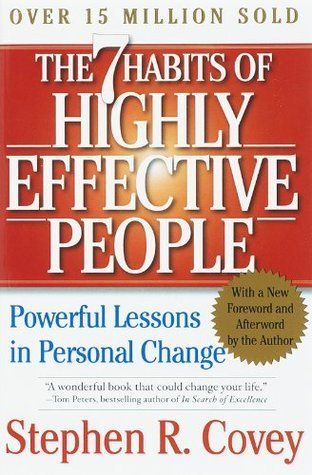
Business
Entrepreneurship
Management
Productivity
Rework Book Summary
Jason Fried, David Heinemeier Hansson
"Rework" challenges conventional wisdom on building businesses, offering a simpler, faster, more direct approach to succeeding by staying small, nimble, and true to yourself.
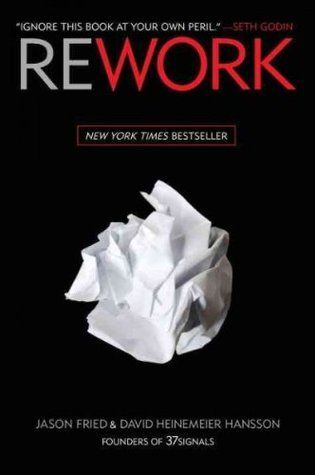
Productivity
Self-Help
Personal Development
Slow Productivity Book Summary
Cal Newport
In "Slow Productivity," Cal Newport argues that the key to producing meaningful knowledge work is rejecting busyness and distraction in favor of a more deliberate approach that prioritizes quality, focus, and a sustainable pace.
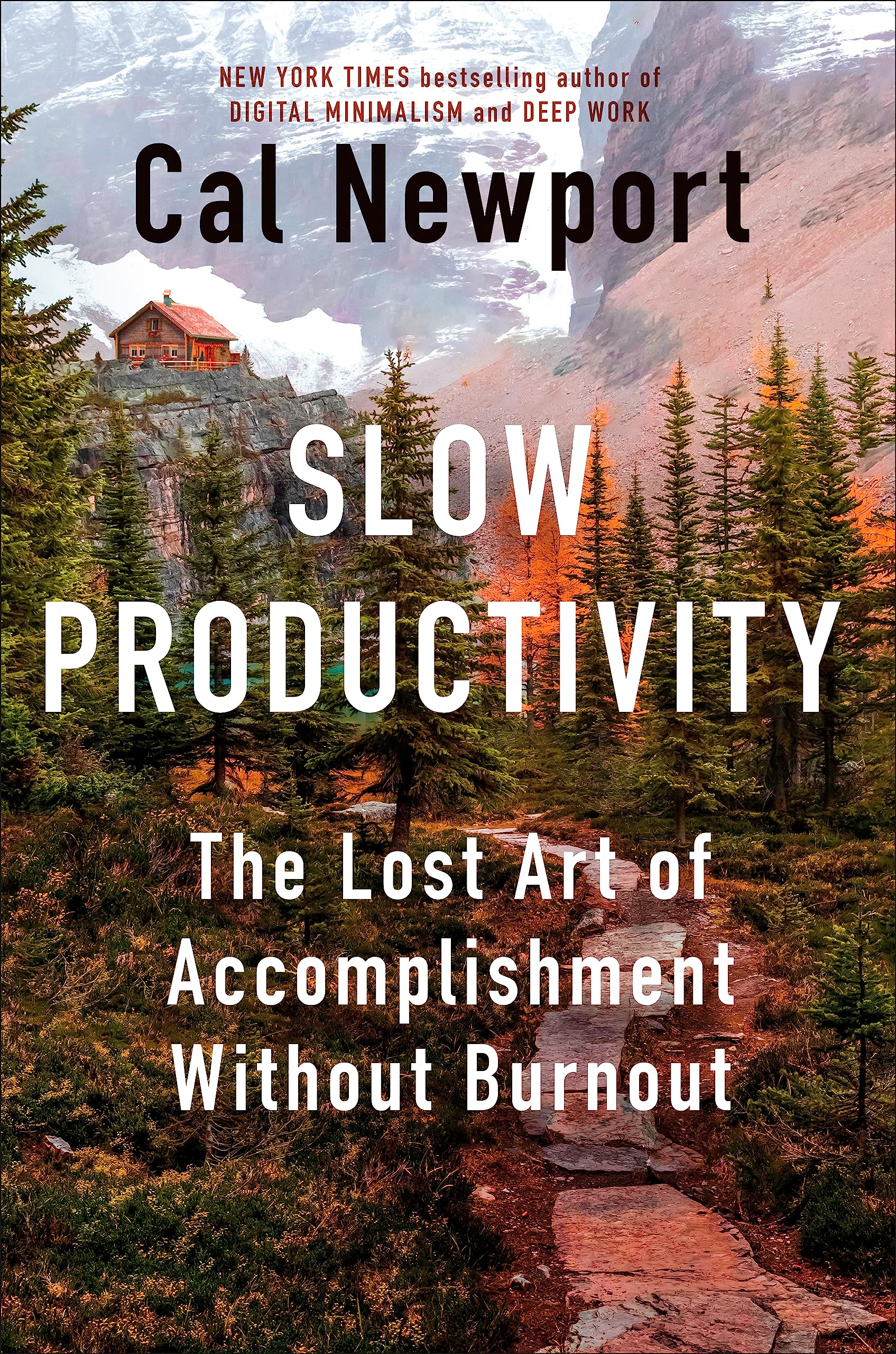
Philosophy
Personal Development
Leadership
Productivity
The Obstacle Is the Way Book Summary
Ryan Holiday
The Obstacle Is the Way presents a practical formula for overcoming life's challenges and achieving success by controlling perceptions, taking decisive action, and cultivating an indomitable will.
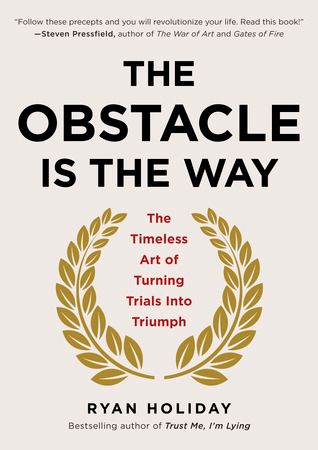
Psychology
Happiness
Productivity
Personal Development
Flow Book Summary
Mihály Csíkszentmihályi
Flow reveals the secrets of optimal experience and shows how to transform even the most mundane moments into a source of enjoyment, creativity and meaning by learning to control consciousness itself.
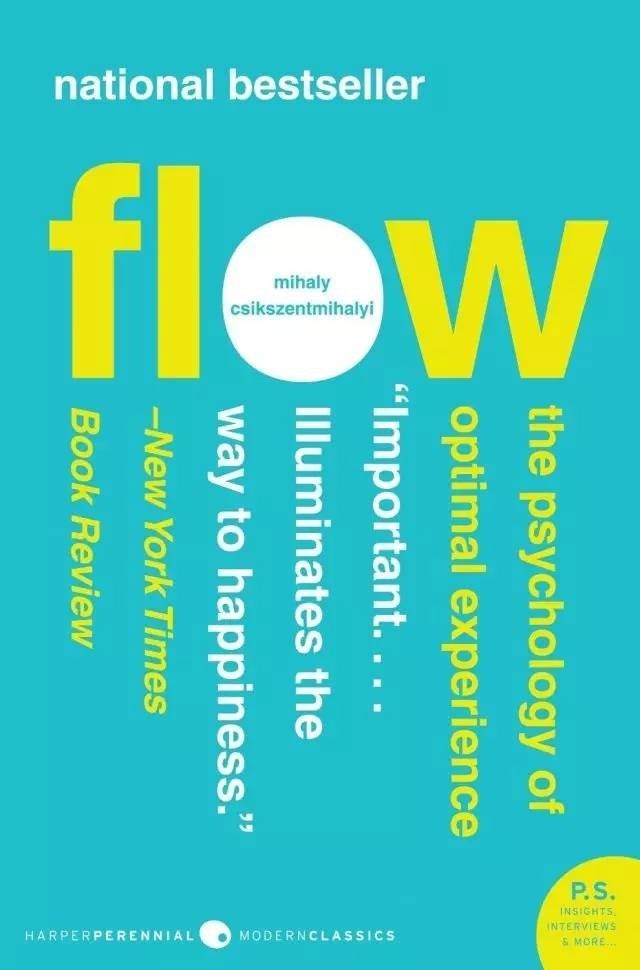
Productivity
Personal Development
Time Management
Deep Work Book Summary
Cal Newport
In "Deep Work", Cal Newport argues that the ability to focus intensely on cognitively demanding tasks is becoming increasingly rare yet increasingly valuable in our economy, and provides a training regimen to cultivate this skill through the application of four rules: work deeply, embrace boredom, quit social media, and drain the shallows.
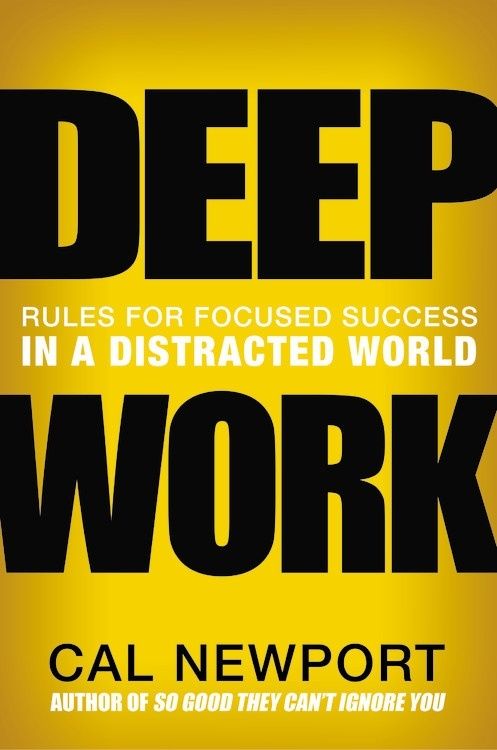
Management
Personal Development
Productivity
Psychology
The Checklist Manifesto Book Summary
Atul Gawande
In The Checklist Manifesto, Atul Gawande compellingly argues that checklists are a powerful yet underutilized tool for improving performance in complex, failure-prone systems, from aviation to construction to healthcare, by ensuring that teams consistently execute on the most critical steps.
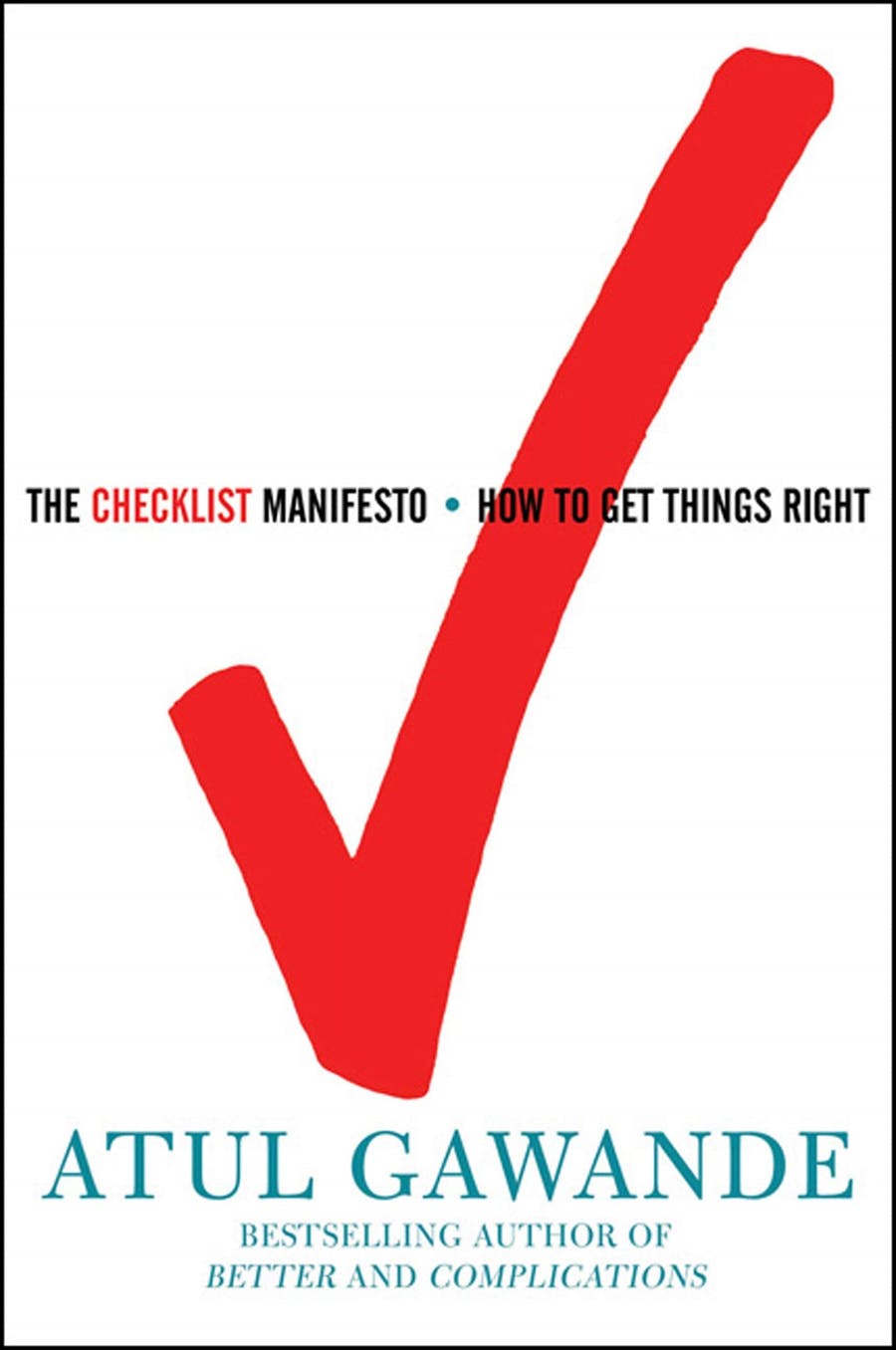
Philosophy
Personal Development
Four Thousand Weeks Book Summary
Oliver Burkeman
"Four Thousand Weeks" offers a radical perspective on time management, urging us to abandon the futile quest for control and embrace our finite existence. By accepting our limitations and making conscious choices, we can discover a more meaningful and fulfilling way to spend our brief time on this planet.
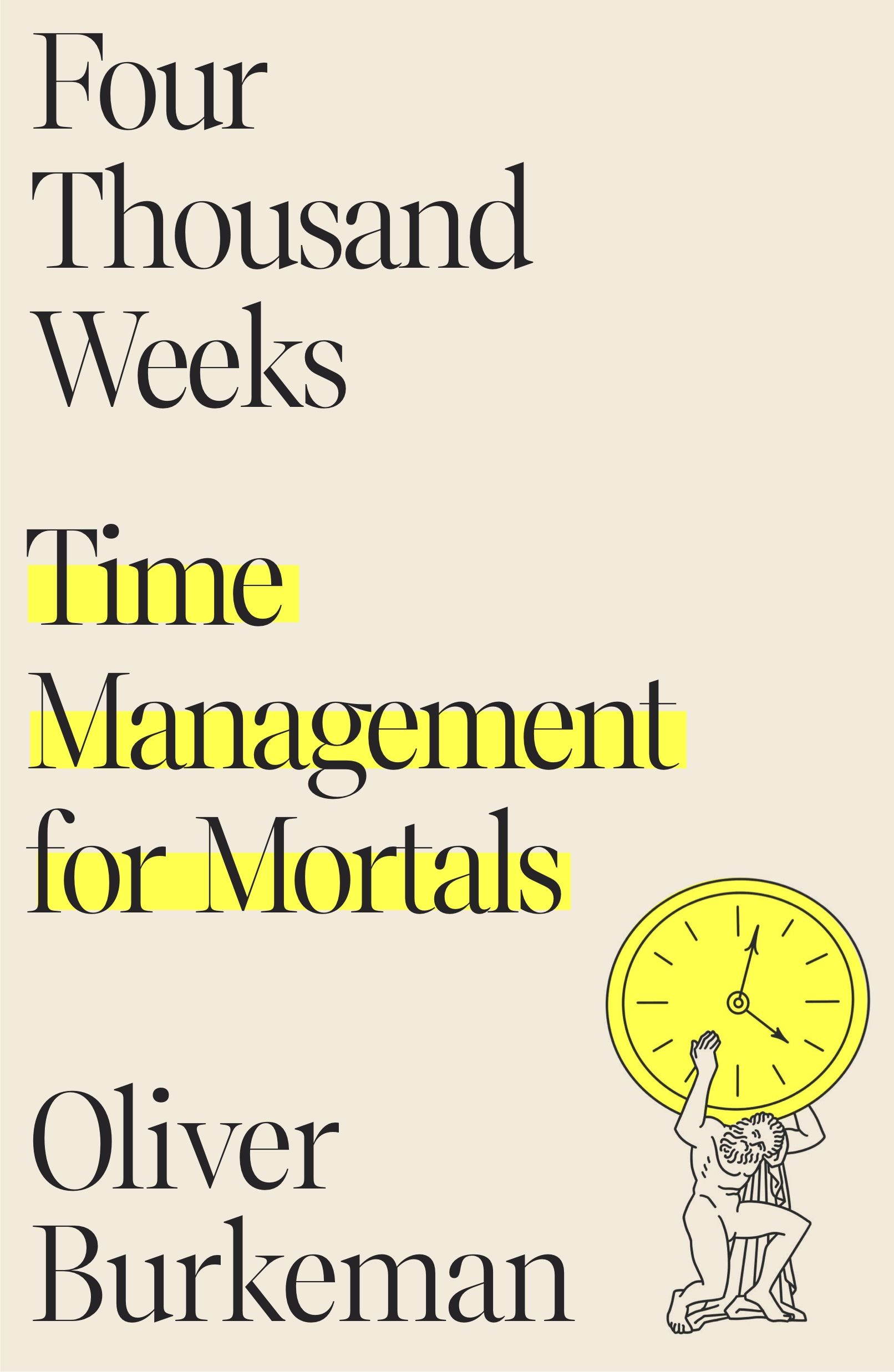
Thinking
Personal Development
Productivity
Business
Clear Thinking Book Summary
Shane Parrish
In "Clear Thinking", Shane Parrish provides a practical guide to overcoming our built-in mental biases and defaults in order to make better decisions, cultivate clear thinking, and align our actions with what truly matters for a life well-lived.
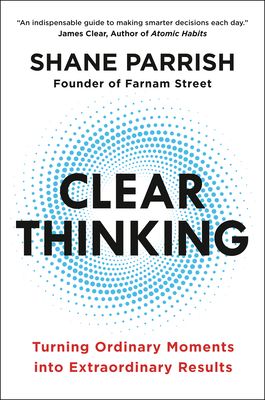
Productivity
Personal Development
Psychology
Atomic Habits Book Summary
James Clear
Atomic Habits reveals the surprising power of small habits, demonstrating how tiny changes can compound into remarkable results over time. By focusing on systems over goals and building identity-based habits, you can create lasting change and unlock your full potential.

Learning
Ultralearning Book Summary
Scott Young
In "Ultralearning," Scott Young reveals the powerful principles and strategies used by elite self-directed learners to rapidly master hard skills and tackle ambitious projects, showing you how to create your own custom learning journeys to accelerate your career, expand your knowledge, and maximize your potential.
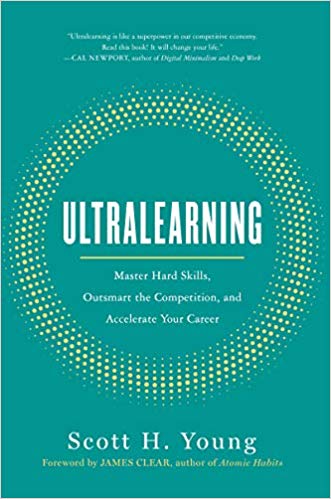
Learning
Education
Psychology
Productivity
Personal Development
Make It Stick Book Summary
Peter Brown, Henry Roediger, Mark McDaniel
Make It Stick offers powerful, evidence-based strategies for deeper, more durable learning - spacing, retrieval, interleaving, elaboration, generation, and reflection - that challenge conventional study habits and unlock our full learning potential.
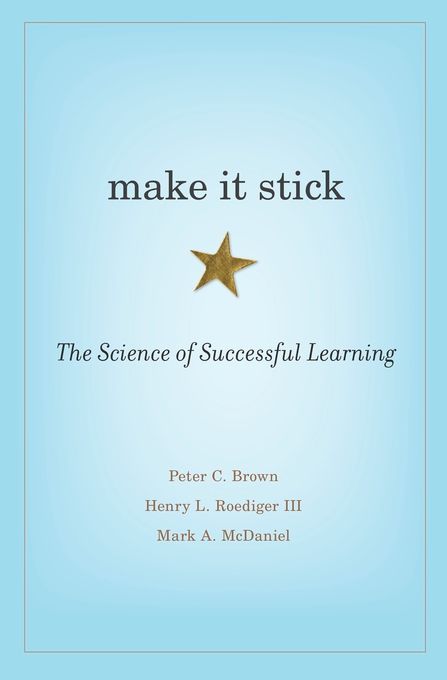
Personal Development
Productivity
Goal Setting
Habits
Happiness
Feel Good Productivity Book Summary
Ali Abdaal
"Feel-Good Productivity" by Ali Abdaal is a transformative guide that teaches us how to harness the power of positive emotions, overcome mental roadblocks, and achieve sustainable success by aligning our actions with our values.

Productivity
Personal Development
Entrepreneurship
The 10X Rule Book Summary
Grant Cardone
The 10X Rule is the key to achieving extraordinary success by setting massive goals and taking even more massive action, declaring success your duty, responsibility and obligation, and adopting the mindsets and habits of the world's most successful people.
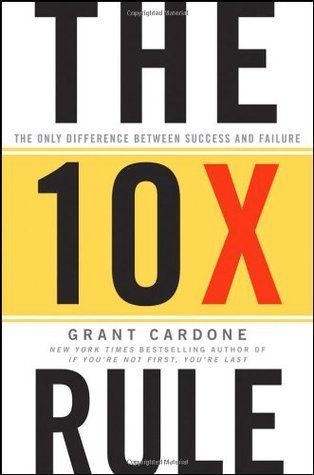
Habits
Personal Development
Management
The Power of Habit Book Summary
Charles Duhigg
The Power of Habit illuminates the science behind habit formation and provides practical strategies for transforming habits in our personal lives, organizations, and society.
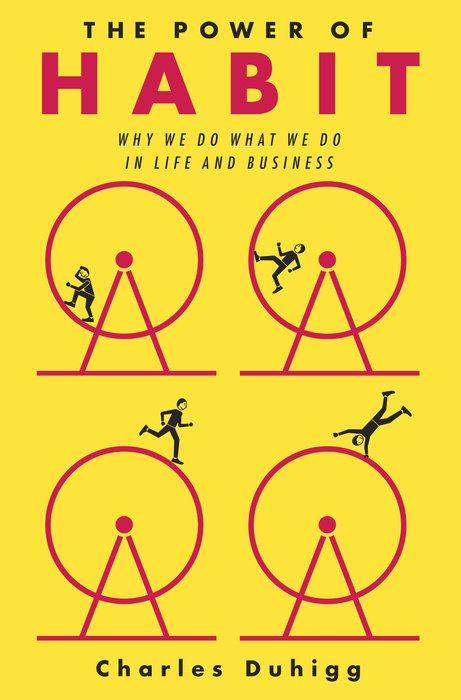
Personal Development
Philosophy
Everything is F*cked Book Summary
Mark Manson
In a world where everything seems fcked, Manson provides a provocative exploration of the human condition, offering a counterintuitive perspective on the nature of hope, the illusion of self-control, and the quest for meaning amongst uncertainty
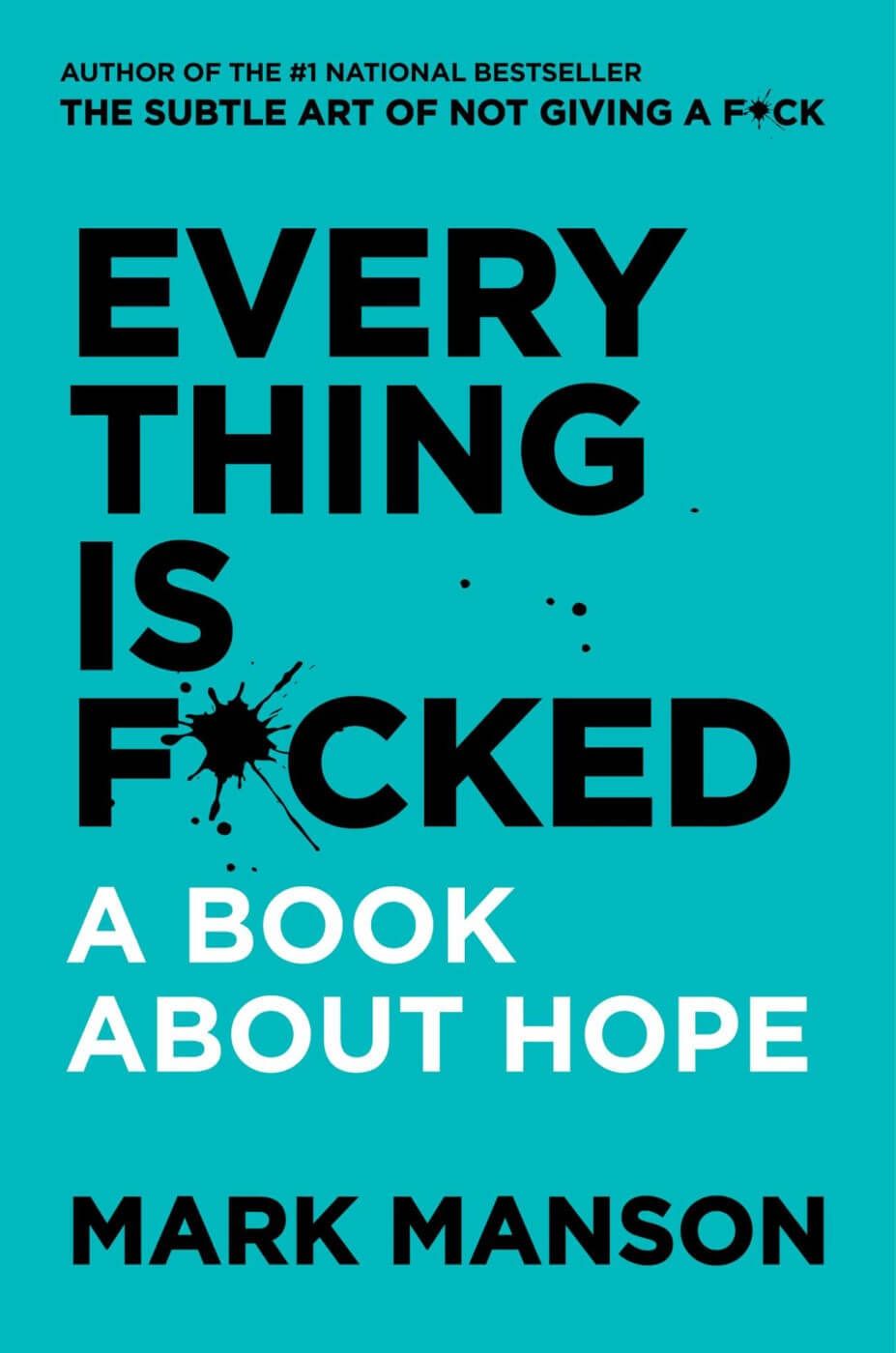
Business
Management
Leadership
Entrepreneurship
Measure What Matters Book Summary
John Doerr
Measure What Matters is the essential guide for using Objectives and Key Results (OKRs) to drive focus, alignment, and extraordinary performance at every level of your organization.
